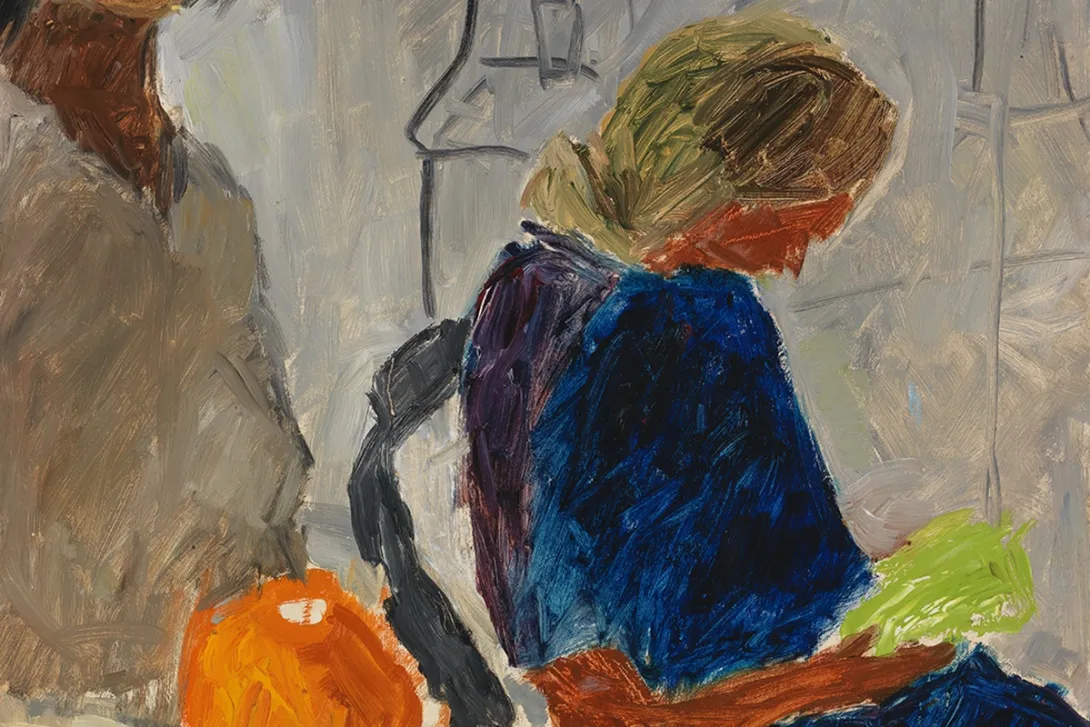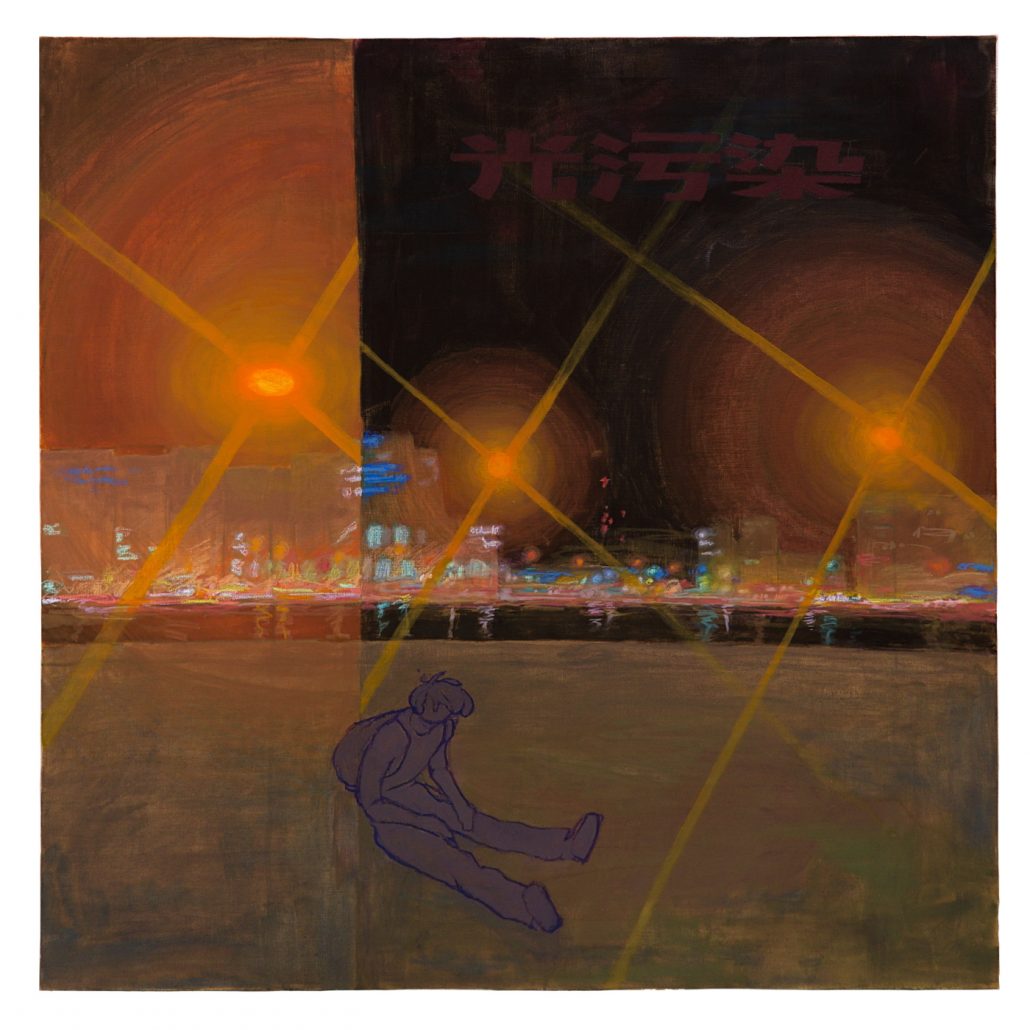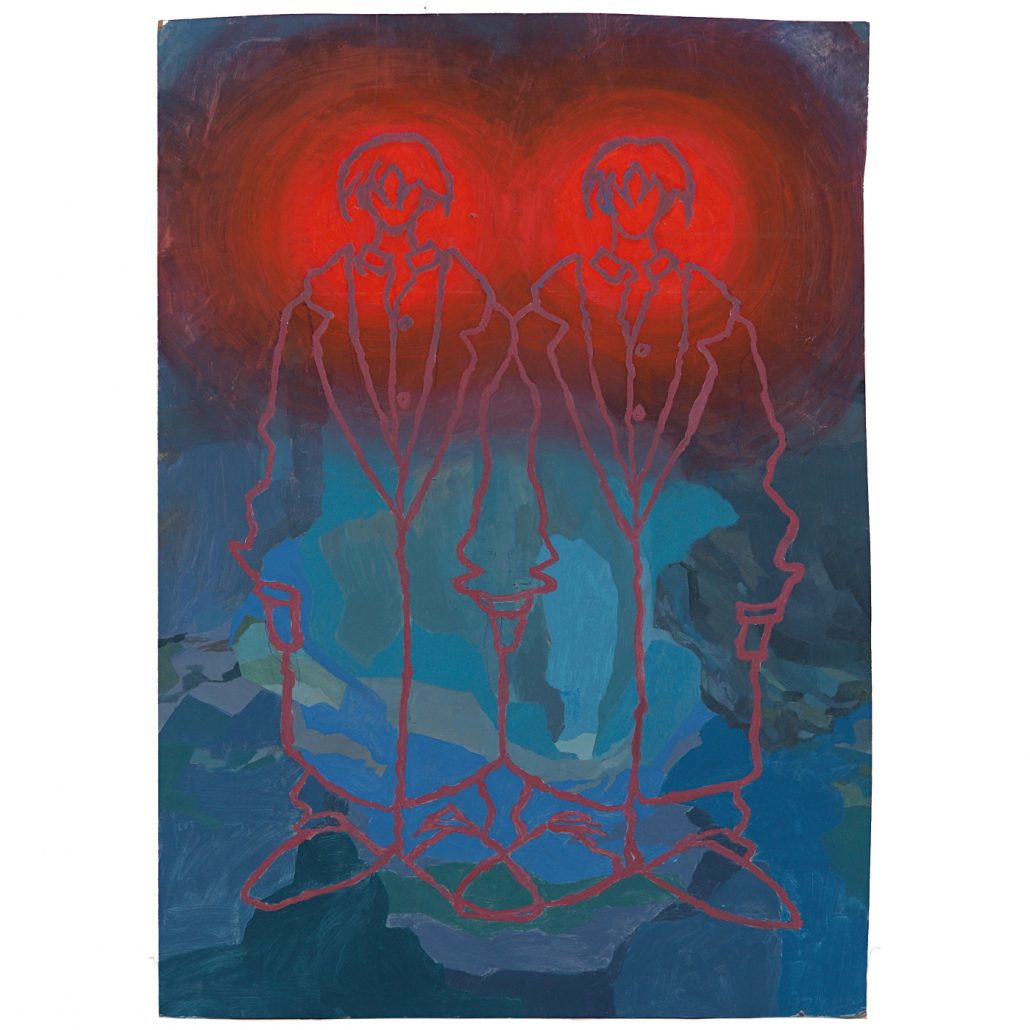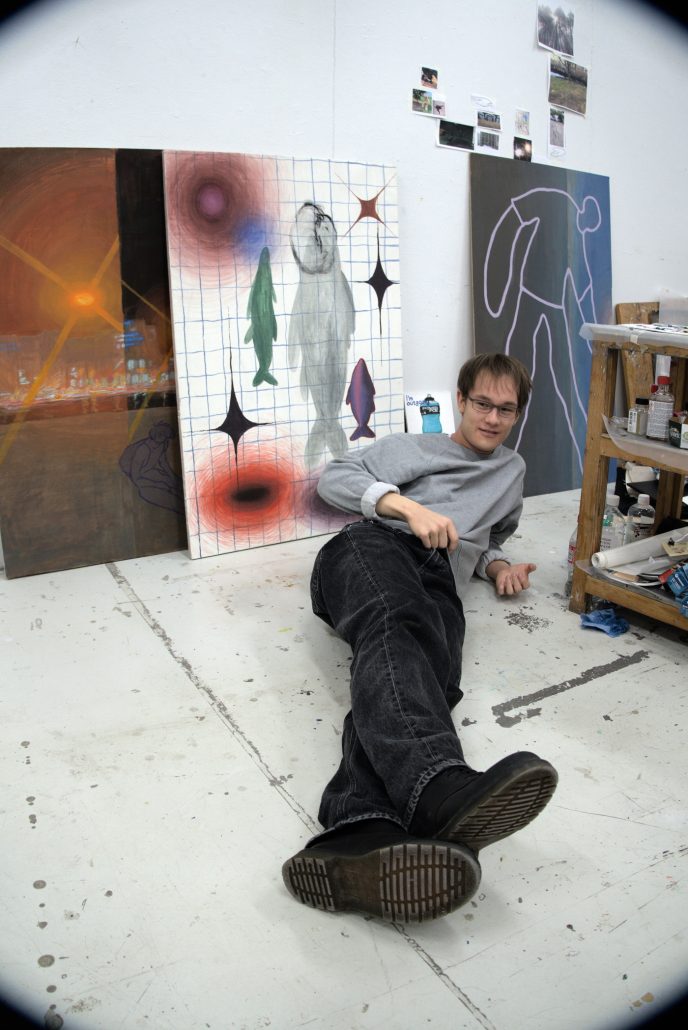Anniversary Exhibition Free 90 | HAM

The distinctive atmosphere and character of the Free Art School's facilities inspired Miska Kukkohovi to apply and begin studying painting.
When did you discover your interest in visual arts?
I grew up surrounded by a lot of foreign media, which sparked my enthusiasm for video games and The Simpsons. For some reason, I became obsessed with the show and started drawing my own characters in a similar style. My parents had worked in advertising as graphic designers, but they weren't really involved with fine art. Over time, most of my major influences came through the internet.
From The Simpsons, I moved on to an anime and manga obsession and began developing my own versions. I drew inspiration from Jean Giraud’s comics, Tite Kubo’s Bleach, and anything else I came across. Later, I got more into the technical aspects of drawing. I downloaded YouTube videos and PDFs about perspective, anatomy, gesture – all of it. That’s when I started following digital figurative art, on sites like DeviantArt and ArtStation. In lower secondary school, a couple of encouraging and kind art teachers inspired me to apply to the Helsinki Upper Secondary School of Visual Arts, where I began creating more actively.
What made you apply to the Free Art School?
In my final year of upper secondary school, a former student visited one of our courses to talk about their current studies at the Free Art School. I had never heard of the place before. At the time, painting felt very unfamiliar to me—I only painted during school art lessons. Outside of that, I mostly drew and made digital paintings. Still, there was this quiet pull—something telling me I should explore painting more deeply. I was growing dissatisfied with how fleeting my digital JPEGs felt online. I could make and share images, sure, but I couldn't reach the materiality I longed for.
What really caught my attention were the photos of the school's spaces that the visiting student projected: the grey, raw, but characterful interior of Kaapelitehdas. And of course, the idea of a school that focuses exclusively on painting—nothing else. The atmosphere seemed appealing, too. So I decided to apply.
What does painting mean to you?
Each painting is a way to negotiate my understanding of myself and the world around me—or just a way to work with my hands. I’d compare painting to building a castle, brick—or painting—by brick. Maybe it’ll become something whole in the future, but that’s not the point. I prefer to put my energy into the bricks themselves, since that’s what’s here and now—not some faraway goal.
In a way, building the castle is also a way of building and dismantling myself. I imagine that personal growth is closely tied to artistic development. Painting is like living—though it takes place within life itself.
In his free time, Kukkohovi enjoys skateboarding and indoor climbing. He is currently in his second year at the Free Art School, a year that has prompted the question: What am I painting, really?
What are your sources of inspiration?
My sources of inspiration are constantly shifting—just like I am. Some things have remained important since childhood; others appear as flashes. The most lasting elements have been video game graphics and environments, manga, and combining or associating things in image editing programs. That collage-like quality is something I also find inspiring in today’s internet culture and memes.
I want to explore virtual realities on equal terms with “real” reality. To an individual, video game worlds, websites, and even social media circles can be just as real as the physical world we see with our eyes. Naturally, real life also inspires me—people I meet, memories, places, nighttime, emotions, music, all kinds of media and entertainment. A bit of this and that.
My favorite animals are gibbons, fish, and cats.
I’m also drawn to cuteness—I like creating sympathetic or relatable characters in my paintings. Characters can act as a bridge into the painting process. It’s easier to have a “conversation” with the painting when there’s a face or body there to engage with. My teacher Aki Turunen once compared painting to a conversation or a relationship, and that perspective has turned out to be surprisingly helpful.
What is essential in painting—what do you think is the most important element?
I relate to the idea that art happens in the space between the viewer and the object or artwork—meaning it's more about the experience of art than art itself. In that case, the most important element of a painting depends on both parties.
It’s really hard to talk about painting in words. Many teachers at the Free Art School say that you have to listen to the painting—that you shouldn’t let it exist only in your head, but actually inside the painting itself. Maybe if you listen closely, the painting will tell you what matters most. Go with the flow!
What has studying at the Free Art School given you?
The past two years have felt like an intense period of change in both my artistic practice and my way of thinking. The first year was about getting used to the materiality of painting, which was new to me. In the second year, material exploration continued, but the content became more open—model and still life work ended. I started asking myself, What am I really painting? Through reading, writing, and of course painting, I’ve begun to find some direction.
One of the most important lessons—something I’m still learning—is how to look at art. I’ve become better at giving things more time and at listening to paintings. I used to easily dismiss work that didn’t feel relatable or skillful to me. But if you spend time with a painting, you can get so much out of it. And painting can be so much more than just a way to mimic reality. Then again, it doesn’t have to create some entirely new world either—it can be whatever you imagine.
Crisis around one’s own work is a pretty common experience among painting students here. I’ve already had the “pleasure” of a few of those, and I’m sure there are more to come. In the second year, I started feeling pressure about eventually graduating into the professional art field—about being able to stand behind my work among all the other talented and important voices out there.
Examining and questioning my own work often makes me feel confused and irritable. But sometimes these crises matter. They push me out of my comfort zone and make me take my work seriously.
This learning process is far from over, but at the Free Art School, I’ve started to understand what it means to respect my own artistic self—to think about it and carry it forward. Sometimes that’s hard.
Something that might be obvious to others—but that I’ve only recently realized in the context of painting—is that every interest or even stylistic habit has its reasons. It’s no coincidence when certain subjects or motifs keep showing up in your work. You have to patiently consider those recurring reasons if you want to better understand your practice. Talking with teachers and classmates helps a lot. My classmates are especially important to me. Having good, like-minded people around you can make or break your artistic and personal growth.
But enough about insights. What this school has given me is a space where I can better understand my own art—and myself. Honestly, I don’t know if this path will lead to a single clear way to make a living. I haven’t chosen an easy profession. But I do feel that so much of what I learn through painting is transferable to other creative fields as well. What matters most to me right now is the present. I try to follow what feels right in my gut.


